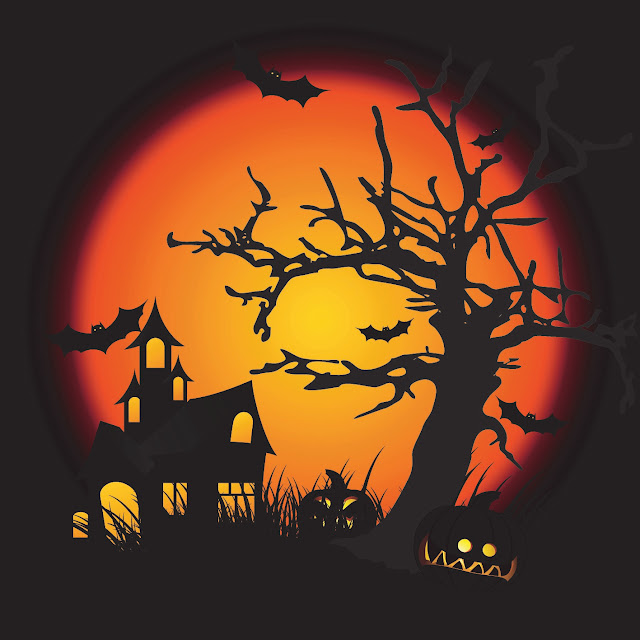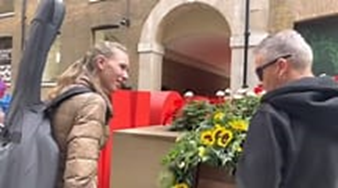Monday, October 31, 2022
HALLOWEEN
Sunday, October 30, 2022
PULITZER AND WORLD PRESS PHOTOS OF THE YEAR, CONTINUED
--------oOo--------
Pulitzer Prizes for Photography:
Between 1942 and 1967 a Pulitzer Prize for Photography was awarded for photojournalism, that is, for photographs telling a news story. In 1968 that award was replaced by awards in two new categories:
- the Pulitzer Prize for Spot News Photography (photography in the nature of breaking news, as it has been called since 2000); and
- the Pulitzer Prize for Feature Photography (human interest and matters associated with new items).
World Press Photo of the Year:
From 1955 World Press Photo has awarded prizes for the best photographs in 10 categories, with an overall award for the image that "... is not only the photojournalistic encapsulation of the year, but represents an issue, situation or event of great journalistic importance, and does so in a way that demonstrates an outstanding level of visual perception and creativity".
The photographs are interesting not only in their own right but for being windows on history.
--------oOo--------
The following item is a repost, having been the subject of a 2010 Bytes post before the Pulitzer and WPP list was started.
I am reposting it to maintain the chronological continuity and, if anything, it has even more relevance today now that everyone with a phone has a camera and is a potential photo-journalist.
It reminds me of . . .
--------oOo--------
Award: Pulitzer Prize for Feature Photography
Year: 1994
Photographer: Kevin Carter
Photograph(s): “For a picture first published in The New York Times of a starving Sudanese girl who collapsed on her way to a feeding centre while a vulture waited nearby."
Comments
Kevin Carter (1960-1994) was a South African photojournalist. Having commenced as a sports photographer, he changed to photojournalism with the intention of showing the brutality of apartheid. He was the first to photograph a public execution by “necklacing”, the practice of putting a petrol filled tyre over a victim’s arms and chest, then setting it alight. He justified his photographs by saying:
"I was appalled at what they were doing. I was appalled at what I was doing. But then people started talking about those pictures... then I felt that maybe my actions hadn't been at all bad. Being a witness to something this horrible wasn't necessarily such a bad thing to do."
He recognised that the media may, in fact, be responsible for the events happening:
"…the camera completed the last requirement, and acted as a catalyst in this terrible reaction. The strong message that was being sent, was only meaningful if it were carried by the media. … The question that haunts me is 'would those people have been necklaced, if there was no media coverage?"
In 1993 Carter was in the Sudan when he saw an emaciated Sudanese infant paused to rest whilst struggling towards a feeding centre. A vulture landed nearby. By his own account Carter waited for about 20 minutes, hoping the vulture would spread its wings. When it wouldn’t, he took the above photograph and chased the vulture away. He then left.
The photo was sold to the New York Times, prompting hundreds to ask what had happened to the toddler. The newspaper replied that the little girl had had enough strength to walk away from the vulture but it wasn’t known what had happened to her afterwards.
An alternative account was later given by Joao Silva, a photojournalist who accompanied Carter. Silva said that the parents of the child were nearby, receiving food from a plane, and had only left the child temporarily.
The photograph was awarded the 1994 Pulitzer Prize for Feature Photography. Carter became a celebrity but inwardly he was still haunted by his demons. Two months after receiving the Pulitzer Price, Carter drove to an area in Johannesburg where he used to play as a child, connected a hose to his car exhaust and took his own life. He left behind a note in which he stated “I'm really, really sorry. The pain of life overrides the joy to the point that joy does not exist."
His note also gives an insight into the horrors in his psyche:
"I am depressed ... without phone ... money for rent ... money for child support ... money for debts ... money!!! ... I am haunted by the vivid memories of killings and corpses and anger and pain ... of starving or wounded children, of trigger-happy madmen, often police, of killer executioners...I have gone to join Ken if I am that lucky."
(The reference to Ken is to Ken Oosterbroek. Oosterbroek was a South African photojournalist and friend of Carter’s who had been killed by friendly fire from peacekeepers near Johannesburg 3 months prior to Carter’s suicide).
Carter’s legacy is not only his famous photograph. Upon publication, the photo prompted complaints from thousands as to Carter having watched the child for twenty minutes, instead of helping her. It also touched off debates and discussions as to the nature and boundaries of news photography.
The
St. Petersburg Times in Florida summed it up: :
"The man adjusting his lens to take just the right frame of her suffering, might just as well be a predator, another vulture on the scene.”
But is that fair? His task was to record the scene and bring the plight to the attention of the world. He was damned if he did and damned if he didn’t. His personal demons left him the only way he saw as out.
Gallery:
See some of Kevin Carter’s brutal images at:
https://campus.digication.com/beccakroll/Kevin_Carter_Bio
Saturday, October 29, 2022
SOME WORD ORIGINS AND A POEM . . .
Friday, October 28, 2022
FUNNY FRIDAY
-------☹😊☹-------
-------☹😊☹-------
Thursday, October 27, 2022
ANECDOTES
Wednesday, October 26, 2022
SONG SPOT
Brendan Kavanagh (born 1967), also known as "Dr K" due to his PhD in English, is a British pianist and piano teacher of Irish descent. He specialises in playing and promoting the boogie-woogie genre, almost exclusively improvised, often combined with classical, jazz, blues, rock & roll, and traditional Irish music themes. He regularly performs in open venues on public pianos, sometimes in duet formats with musically inclined passers-by or friends. He also plays the piano accordion, with emphasis on traditional Irish tunes.
"My new songs from Scott's Lady of the Lake especially had much success. They also wondered greatly at my piety, which I expressed in a hymn to the Holy Virgin and which, it appears, grips every soul and turns it to devotion."







































